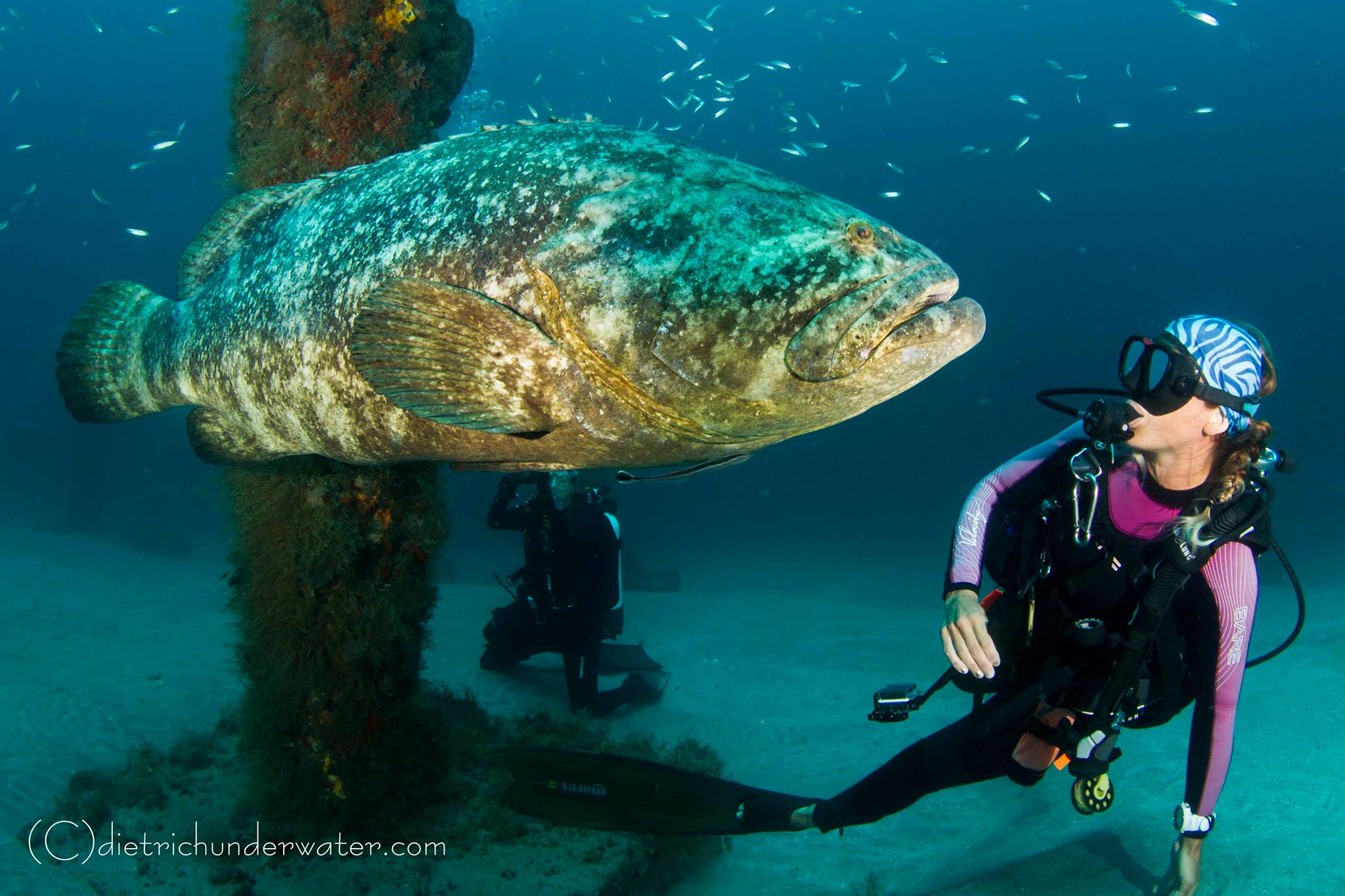Scuba Diving 101: Drift Diving Jupiter
Jupiter diving is all drift diving. We don’t anchor the boat or tie up to a dive mooring, meaning that the boat is always moving and in motion. Powered by the boat’s engine or when not in gear, by the wind, waves and current.
When learning how to dive a regular dive, you learn about currents and how they can wear you out and affect the distance you might cover during the dive. And that when the current is too strong, it might result in not being able to dive at all. Drift diving comes into play in areas where the currents are consistently stronger. Instead of having the current work against you, you let it help and do the work for you—turning it into a very enjoyable way of diving. It can be very relaxing to simply float along the Jupiter Ledges knowing the boat is traveling with you.
The dive instructor aboard the Kyalami will jump in the water holding a reel with a float line that has a dive flag attached. We do this so when the divers are underwater, the captain and crew have a visual on where the group is during the dive. The flag makes it easier for the dive boat to follow the group, and it shows other boats that there are divers in the water and therefore to stay clear from that area. There are other areas in Florida where dive boats require every buddy team to carry their own dive flag, but that’s not the case in Jupiter. Here, the dive guide is the only one holding a line with a dive flag.
Underwater, the dive guide will control the line with a reel, making sure to adjust the line to account for changes in depth, as well as to keep the line from becoming snagged. You’ll notice the guide holding the reel in his/her hand and not attach it to their BCD. Attaching a line to your BCD might sound like a good idea because it could free up your hands, but IT’S NOT! It sounds unlikely, but if a passing boat were to run over the flag (surface marker) and catch the line by accident, the diver that has the line attached to his/her BCD could be dragged to the surface what then could result in a decompression injury. Not a good idea!
During the dive briefing, the dive guide will include the procedure that should be followed for entering the water. It’s important the everyone gets in quickly (but safely) so the group can descent and start their dive together. When in the water, the float line now also serves as a reference line for the divers. It can be used as a visual reference during the descent and show where the guide is, and it can help maintain buoyancy at 15ft while doing the safety stop during the ascent. After returning to the surface, the dive flag now provides a safe spot for divers to wait for the boat, since other boats are required by law to stay clear from a dive flag in the water.
When drift diving in Jupiter, every diver is required to carry their own surface marker buoy (SMB). This is extremely important for the divers safety, and to make sure the diver gets picked up by the dive boat. A diver might not surface right next to the dive flag, and wants to be as visual as possible. Even when surfacing next to the flag it’s important to still inflate your marker. The more visual you are, the less likely it is for a random boat to get too close. Especially on weekends and during holidays where there tends to be a lot of boat traffic—so it’s better to be safe than sorry! It’s recommended to inflate your SMB when you leave the bottom or when at the safety stop. This can only be done if it’s attached to a (finger) reel so it can shoot up to the surface without taking the diver up at the same time. When your marker is at the surface before you, you’ll increase your own safety, and decrease the waiting time on the surface since the boat already knows where you are.
The technique used for re-boarding the boat varies per dive boat, and is the most critical part of drift diving. The boat is in constant motion and so are the divers, as both are drifting with the current but not necessarily at the same speed. It is very important to follow instructions from the captain and crew to make sure that you’ll get back on the boat safe. Aboard the Kyalami, the captain will bring the boat as close as possible to the divers before calling out ‘NEUTRAL’. At this point the boat is no longer in gear and the deckhand will signal the divers to make their way to the boat and grab a hold of the platform. The deckhand will then continue to communicate with the divers and tell them to make sure that they keep holding on to the platform while taking off fins off and climbing up on the ladder.
Drift diving is great. Yes, just like other types of diving there are certain rules that you need to follow, but when you do you’re in for a treat. You’re able to cover larger areas, don’t have worry about returning to a certain exit point, and you get to ‘glide’ through the water while effortlessly enjoying the beautiful underwater world. Let’s go diving!



